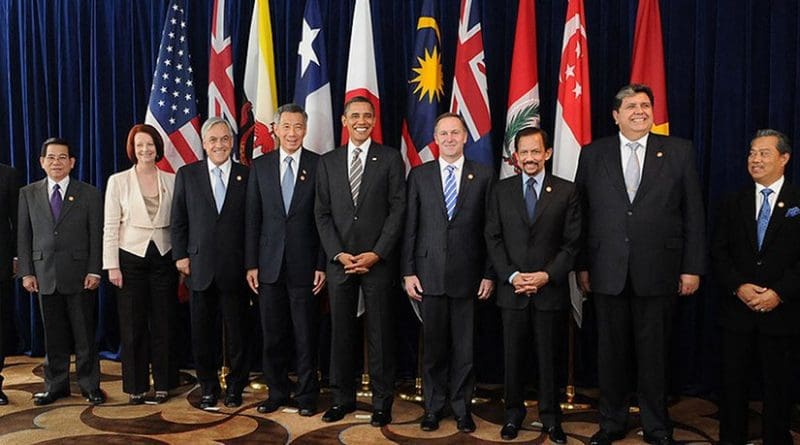USITC’s TPP Report Doesn’t Incorporate Losses Associated With Patent And Copyright Protection – OpEd
By Dean Baker
The United States International Trade Commission (USITC) report on the Trans-Pacific Partnership (TPP) was far closer in its assessment of the impact of the TPP on the US economy to the earlier report from the United States Department of Agriculture (USDA) than the recent report produced by the Peterson Institute for International Economics.
- The ITC projected a net increase in exports of $25.2 billion in 2032 (in 2032 dollars). By contrast, the Peterson Institute’s projection of the gains in exports was more than an order of magnitude larger, projecting an increase in exports of $357 billion in 2030 (in 2015 dollars).
- The report projected a slightly larger increase in imports of $48.9 billion (in 2032 dollars).
- The report projected that agricultural exports would rise by $7.2 billion, while imports would increase by $2.7 billion, for an increase in net exports of $4.5 billion, a bit over 1.0 percent of the sector’s output.
- The report projected manufacturing exports would increase by $15.2 billion, while imports would increase by $39.2 billion, for a net increase in the deficit in manufactured goods of $24.0 billion. It indicated this would result in a drop in manufacturing employment of 0.2 percent.
- The projected growth in imports of services would be $7.0 billion, slightly exceeding the projected growth of exports of $4.8 billion, which means that the agreement would lead to a modest reduction in the surplus on services.
- The overall projected gains to national income by 2032 are$57.3 billion or 0.23 percent. Since this gain is realized over the next 16 years, it implies an increase to the annual growth rate of just over 0.01 percentage point. In other words, the USITC projects that as a result of the TPP, the country will be as wealthy on January 1, 2032 as it would otherwise be on February 15 of 2032.
It is worth noting that the ITC modeling exercises in the past have not been good predictors of the outcomes of trade deals. For example, their models failed to project the large increases in the deficit with Mexico following NAFTA, the increase in the deficit with China following PNTR, and the increase in the deficit with Korea following the U.S.-Korea trade agreement.
The USITC also has not done well in projecting winning and losing sectors from trade agreements. A recent analysis by CEPR found no relationship between the industries that were projected to be export and import gainers and losers from the trade deal with Korea and the actual outcome.
Also, this analysis does not seem to incorporate any of the losses associated with the stronger and longer patent and copyright protection required under the TPP. Higher prices for drugs, software and other protected items are likely to impose substantial costs on the United States and other parties to the agreement. For example, the New Zealand government estimated that just one provision – extension of copyright protection from 50 years to 70 years – would cost the country 0.024 percent of GDP. This amount is 10 percent of the total gains projected in the USITC report. It is entirely possible that a full assessment of the cost of these provisions would show that the TPP would lead to a net reduction in income for the United States and other countries in the pact.

